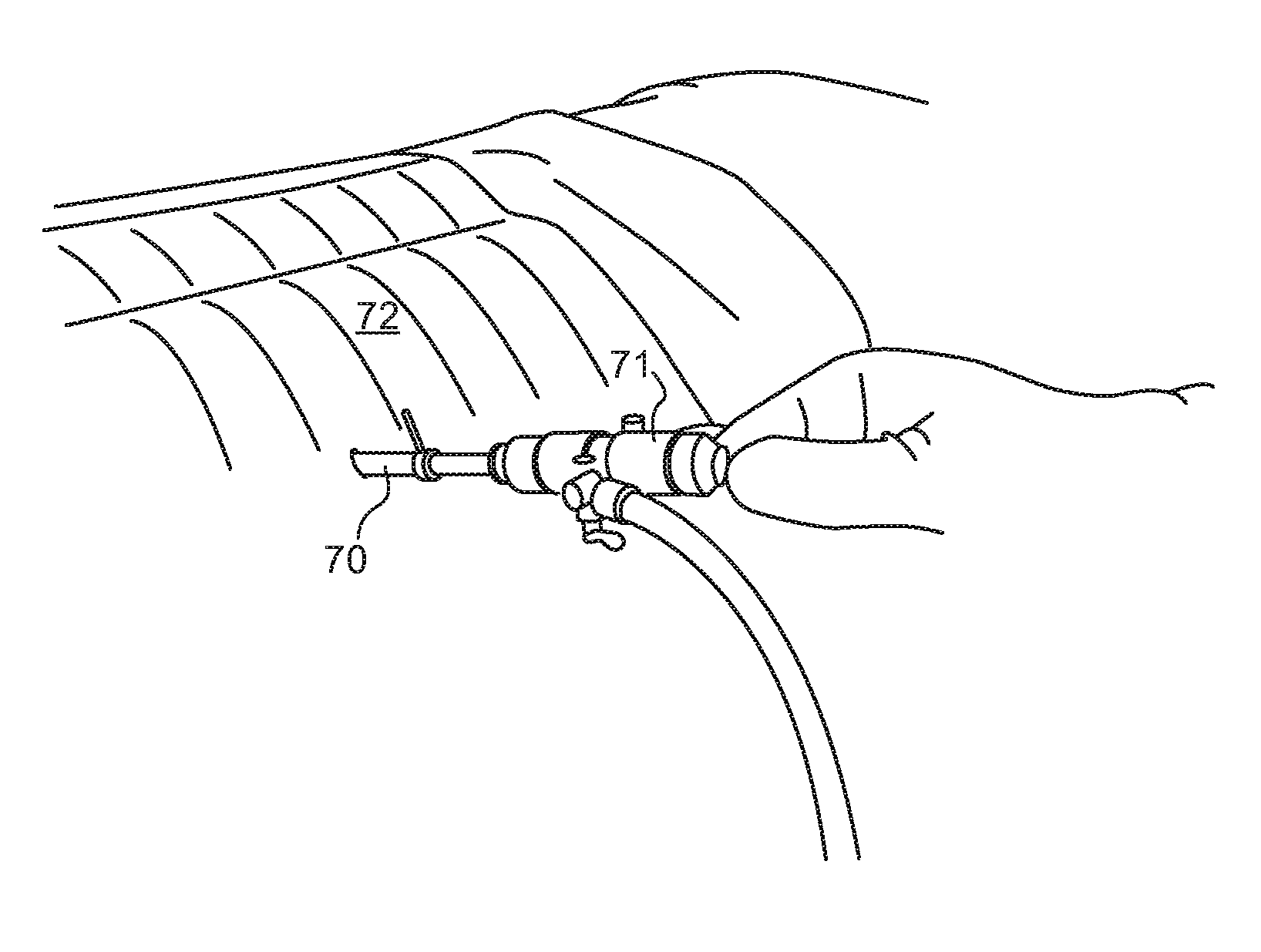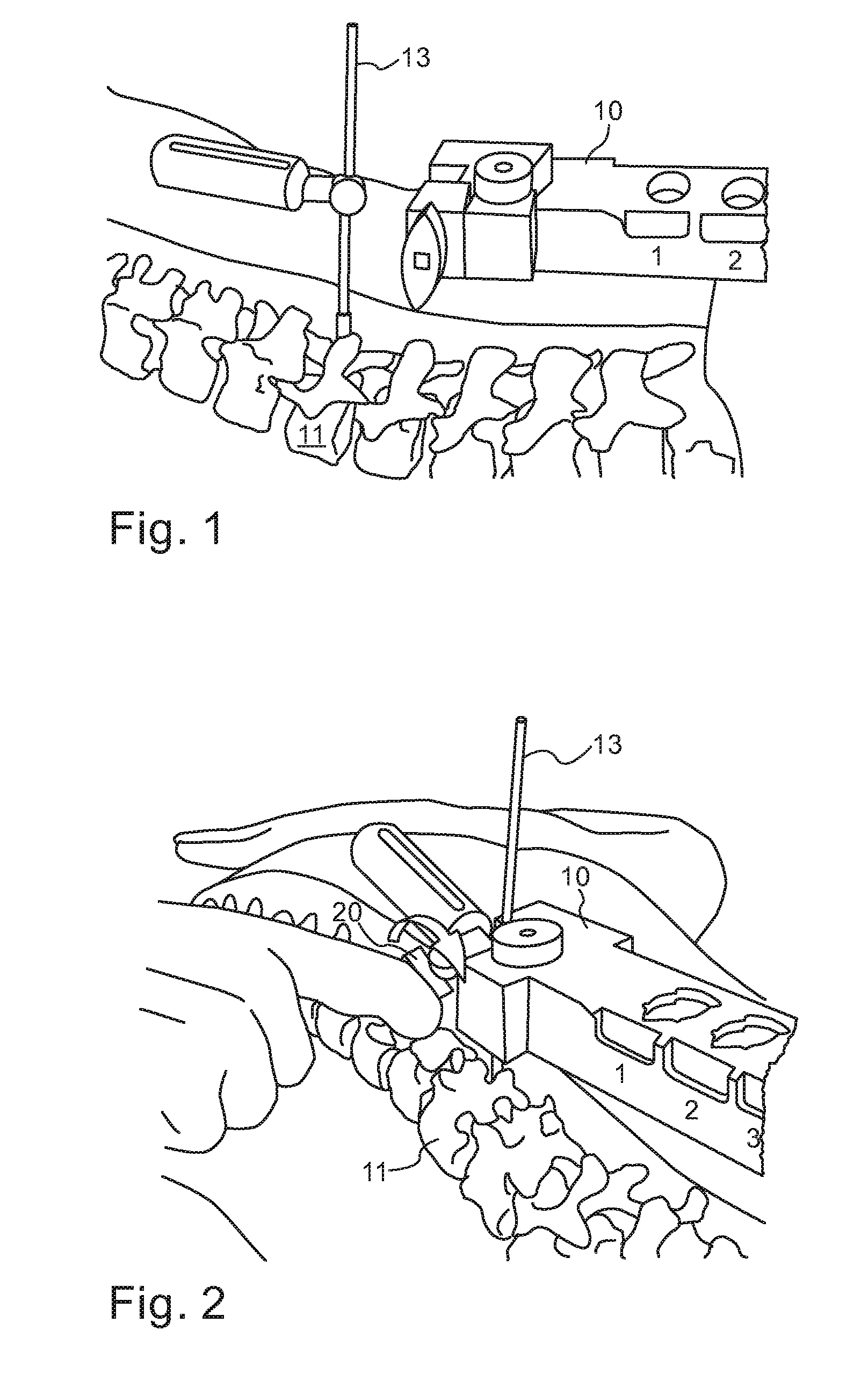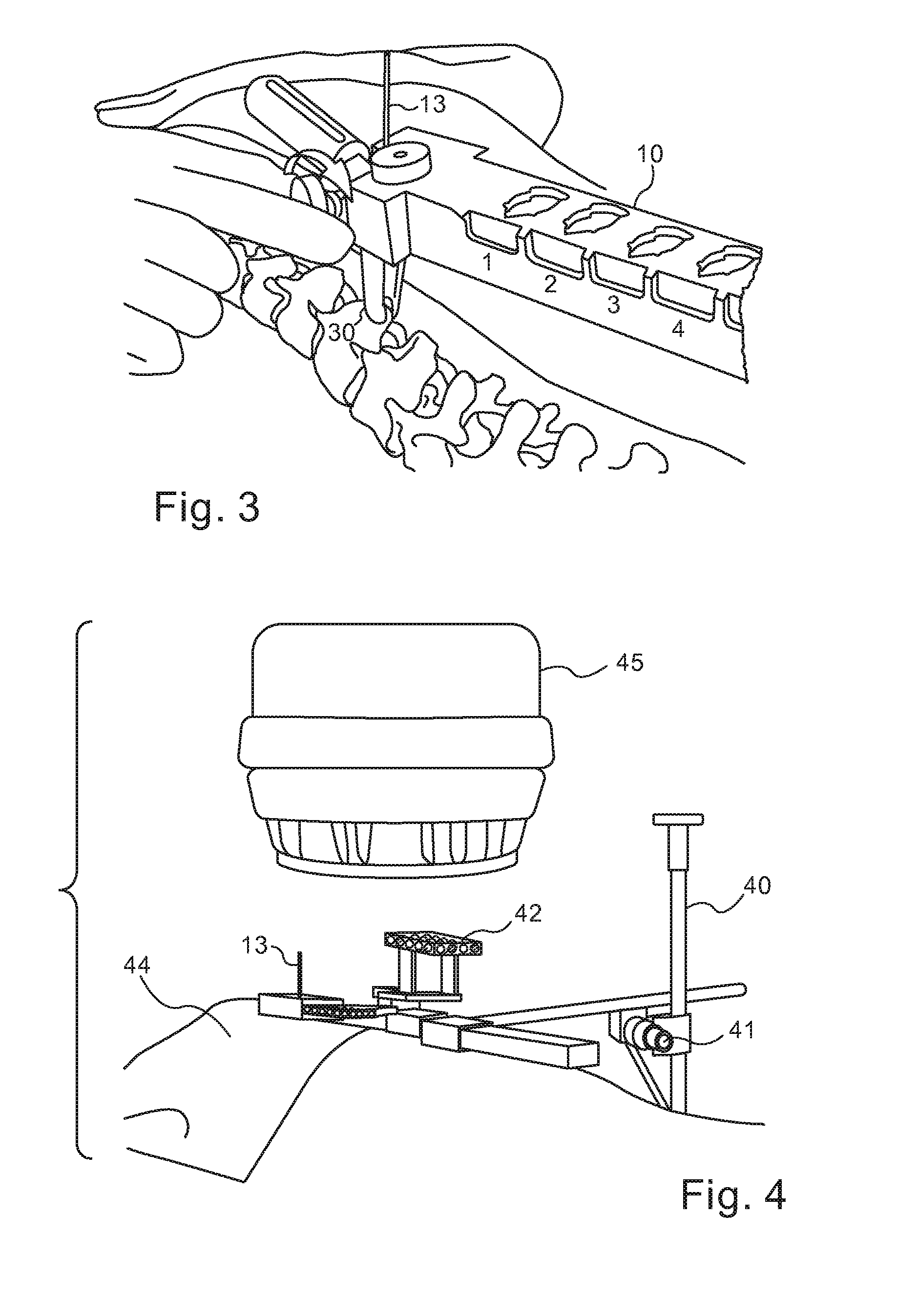Robotic guided endoscope
a robotic and endoscope technology, applied in the field of robotic guided endoscopes, can solve the problems of difficult intraoperative correction to reach the required operating site, difficult to achieve dexterity and precision of instrument control within the confines of a limited operating space, and difficulty in reducing the trauma of the operation, so as to reduce the trauma and the level of accuracy
- Summary
- Abstract
- Description
- Claims
- Application Information
AI Technical Summary
Benefits of technology
Problems solved by technology
Method used
Image
Examples
Embodiment Construction
[0034]The following description is based on an exemplary spinal operation implementation in which the robot is mounted on a bridge element having a number of predetermined attachment positions for the robot. The bridge may be supported at one end on a vertebra of the patient and at the other end on a support post rigidly mounted to the bed (to be shown in FIG. 5). It is to be understood though that this is merely one exemplary procedure and method of supporting the robot, and the invention is not intended to be limited to spinal procedures or to this particular method. Reference is now made to FIG. 1, which illustrates schematically (on a phantom of the spine so that the exact subcutaneous procedure can be followed) how the bone supported end of the robotic bridge 10 can be fixed to one of the vertebrae 11 of the subject. A hole is drilled, preferably into the spinous process in the region of the operating site, and a supporting pin 13 is screwed in, by means of which the end of the...
PUM
 Login to View More
Login to View More Abstract
Description
Claims
Application Information
 Login to View More
Login to View More - R&D
- Intellectual Property
- Life Sciences
- Materials
- Tech Scout
- Unparalleled Data Quality
- Higher Quality Content
- 60% Fewer Hallucinations
Browse by: Latest US Patents, China's latest patents, Technical Efficacy Thesaurus, Application Domain, Technology Topic, Popular Technical Reports.
© 2025 PatSnap. All rights reserved.Legal|Privacy policy|Modern Slavery Act Transparency Statement|Sitemap|About US| Contact US: help@patsnap.com



